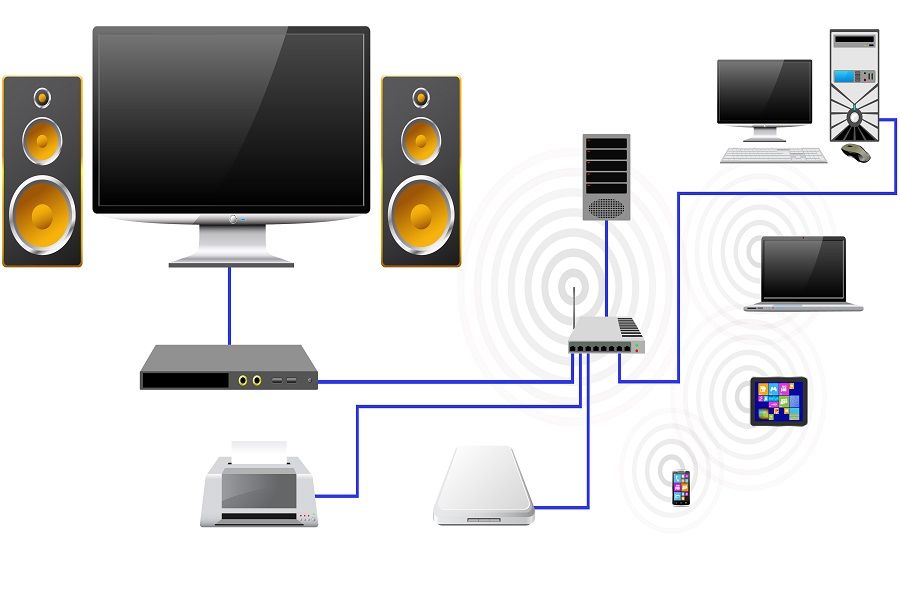
What is the Difference Between Wi-Fi, Bluetooth, and Z-Wave?
Now that we’re living in the connected era, there may be dozens of devices linked to your home networking at any given time. What was once reserved for just computers now includes speakers, televisions, control solutions and more. Not only does this mean that you need to work on boosting the network in your Guntersville, Alabama home, but it also means you need a professional to help you bring all these devices together seamlessly.
It is not as easy as connecting an Ethernet cable to the wall since many products in your home may communicate differently. Here we’ll go through the three most popular wireless connections to give you a little snapshot of what a network setup entails in a smart home:
SEE MORE: 4 Things You Need to Know About Your Home Network
Wi-Fi: Wi-Fi is the simplest wireless system to install and configure. It’s primarily used to transmit data. You use it to browse the internet, stream media, and check emails. Wi-Fi is used in many connected devices including televisions and speakers, though it hasn’t really broken into the smart home market.
Wi-Fi is not typically used in smart control products since it uses a lot of power and memory. Now that the smart home market is expanding to the general public, Wi-Fi has refocused its strategy and is working on low-power alternatives to be used in smaller smart devices.
Bluetooth: Bluetooth connections are ideal for devices that will work in close proximity since Bluetooth has a range of about 100 meters. One of the biggest benefits it brings to the table is that it’s extremely secure:
“Frequency-hopping also helps to make Bluetooth connections very secure. On top of that, the technology has government-grade encryption baked into it, making it nearly impossible to hack.” John Patrick Puller “What Is Bluetooth?” Time.com
Like Wi-Fi, Bluetooth has tried to expand the reach of its products to fit the emergence of the smart home market. They have created Bluetooth LE and Bluetooth Smart, which take up less power.
A problem that can arise from jamming too many Bluetooth or Wi-Fi smart devices onto your home networking is that many use the same 2.4 GHz spectrum which results in higher interference and traffic. We can help alleviate this problem by using dual-band routers that can divide your traffic between 5 GHz and 2.4 GHz.
Z-Wave: Z-Wave uses the least amount of power and has the biggest reach by using a mesh network. Instead of relying on a few access points as you would for Wi-Fi, each device serves as a ‘node’. All these nodes communicate directly with each other, making communication quicker since there’s no need to relay the signal back to a central router.
While this solution offers a broad low-bandwidth connection, the problem is that it’s not compatible with many common devices including tablets, smartphones or computers. You need to install a network hub to ease communication. For example, the RTI Z-Wave Interface can unify all Z-Wave enabled devices under one user interface, instead of needing a different App for each product.
Want to learn more about how to create home networking solutions that incorporate all these wireless standards?

Elevate your family’s entertainment experience with an indoor or outdoor home theater!

Elevate your game day experience with ultimate Home Tech!

Ringing in the New Year with Innovation and Connection

The Ultimate Home Theater and Smart Family Room Guide

